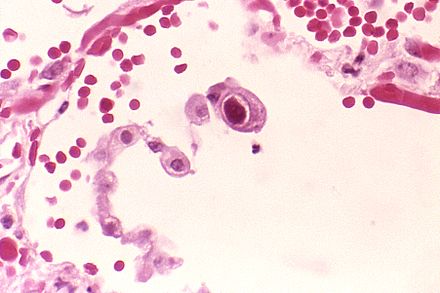Transverse Myelitis
Transverse myelitis (TM) is a rare neurological condition where the spinal cord becomes inflamed. The term "transverse" indicates that the inflammation extends horizontally across the spinal cord. TM is characterised by weakness and numbness in the limbs, sensory and motor deficits, dysfunctional urethral and anal sphincter activities, and autonomic nervous system dysfunction, potentially causing episodes of high blood pressure.
The exact cause of TM remains unknown, though it has been linked to various infections, immune disorders, and demyelinating diseases. Unlike leukomyelitis, which affects only the white matter, TM impacts the entire cross-section of the spinal cord.

Signs and Symptoms
Symptoms of TM typically develop over hours to weeks and include weakness and numbness of the limbs, sensory deficits, and motor skill impairments. Sensory symptoms may include a sensation of pins and needles rising from the feet. There is often a "sensory level" below which sensations of pain or light touch are impaired. Motor weakness mainly affects muscles that flex the legs and extend the arms due to pyramidal tract involvement. Dysfunction of the autonomic nervous system can lead to episodes of high blood pressure.
The symptoms depend on the spinal cord level involved. Upper cervical segments can impact all four limbs and may cause respiratory failure due to phrenic nerve involvement. Lower cervical lesions lead to a mix of upper and lower motor neuron signs in the upper limbs and upper motor neuron signs in the lower limbs. Thoracic lesions, the most common, result in spastic paraparesis in the lower limbs. Lumbar lesions produce a combination of upper and lower motor neuron signs in the lower limbs.
Causes


TM is a heterogeneous condition with various identified causes. In 60% of cases, the cause is idiopathic. Known causes include infections (e.g., HIV, herpes simplex, herpes zoster, cytomegalovirus, Epstein-Barr, Zika virus, and West Nile virus), immune system disorders, and demyelinating diseases like multiple sclerosis (MS) and neuromyelitis optica (NMO). Bacterial causes include Mycoplasma pneumoniae, Bartonella henselae, and Borrelia species causing Lyme disease. Other causes include helminth infections, spinal cord injuries, vascular disorders, and paraneoplastic syndrome.
Diagnosis

In 2002, the Transverse Myelitis Consortium Working Group proposed diagnostic criteria for idiopathic acute TM, including motor, sensory, or autonomic dysfunction attributable to the spinal cord and signs of inflammation. Exclusion criteria rule out other causes like spinal irradiation, thrombosis, and infections.
Diagnosis involves urgent investigation by a neurologist, MRI, and lumbar puncture. High-dose corticosteroids are often administered early to reduce inflammation and swelling, although their efficacy remains debated.
Differential Diagnosis
The differential diagnosis includes demyelinating disorders like MS and NMO, infections such as herpes zoster and herpes simplex, and other inflammatory disorders like systemic lupus erythematosus and neurosarcoidosis. It's very important to rule out acute spinal cord compression.
Treatment
Early treatment can lead to complete or near-complete recovery. Options vary based on the underlying cause and may include plasmapheresis. Recovery timing varies; some patients improve within weeks to months, while others may not recover fully. Aggressive physical therapy and rehabilitation are essential for those with incomplete recovery.
Prognosis
Prognosis depends on improvement within 3 to 6 months. One-third of patients fully recover, another third have significant neurological deficits, and the remaining third show no recovery.
Epidemiology
The incidence of TM is 4.6 per 1 million per year, affecting men and women equally. TM can occur at any age, but peaks around ages 10, 20, and after 40.
History

The earliest descriptions of TM were published in 1882 and 1910 by neurologist Henry Bastian. Frank Ford in 1928 suggested TM could be a post-infection syndrome. The term "transverse myelitis" was coined by Dr. Suchett-Kaye in 1948. The definition of TM has evolved to include specific diagnostic criteria excluding systemic or neurological illnesses and emphasising rapid progression.
Society and Culture
In 2016, former Slipknot drummer Joey Jordison revealed his battle with TM, raising public awareness. Jordison passed away in 2021, though it is unclear if TM was related to his death.
Etymology
The term "transverse myelitis" originates from Latin and Greek, with "myelós" meaning spinal cord and the suffix "-itis" indicating inflammation.
Self-assessment MCQs (single best answer)
What is the primary characteristic of Transverse Myelitis (TM)?
Which of the following is NOT a common symptom of TM?
What does the term "transverse" in Transverse Myelitis indicate?
Which diagnostic criteria were proposed by the Transverse Myelitis Consortium Working Group in 2002?
Which of the following is a known cause of TM?
What percentage of TM cases are idiopathic?
Which spinal cord segment, when affected by TM, can lead to respiratory failure?
What is the typical incidence of TM per year?
Who coined the term "transverse myelitis"?
What is the prognosis for TM patients who show improvement within 3 to 6 months?
Dentaljuce
Dentaljuce provides Enhanced Continuing Professional Development (CPD) with GDC-approved Certificates for dental professionals worldwide.
Founded in 2009 by the award-winning Masters team from the School of Dentistry at the University of Birmingham, Dentaljuce has established itself as the leading platform for online CPD.
With over 100 high-quality online courses available for a single annual membership fee, Dentaljuce offers comprehensive e-learning designed for busy dental professionals.
The courses cover a complete range of topics, from clinical skills to patient communication, and are suitable for dentists, nurses, hygienists, therapists, students, and practice managers.
Dentaljuce features Dr. Aiden, a dentally trained AI-powered personal tutor available 24/7 to assist with queries and provide guidance through complex topics, enhancing the learning experience.
Check out our range of courses, or sign up now!


